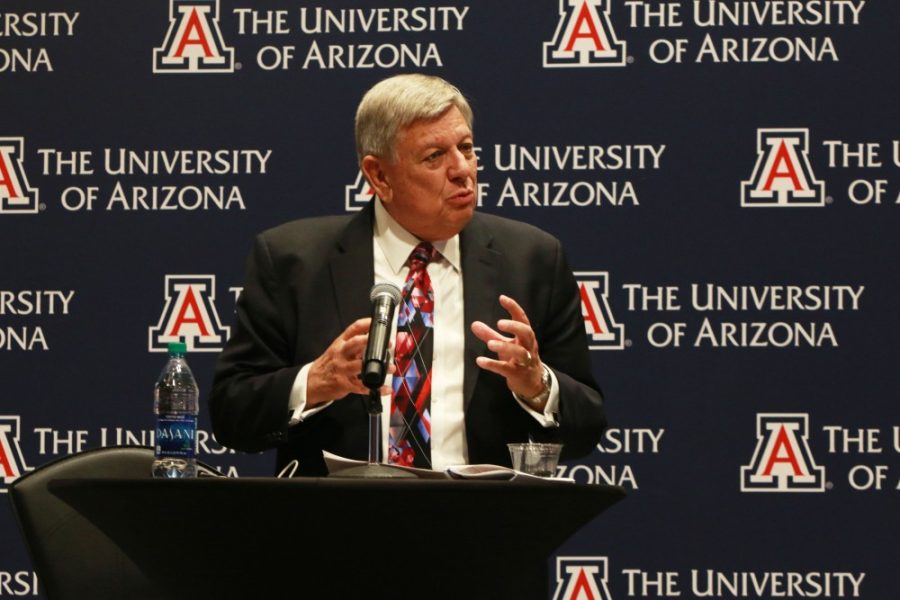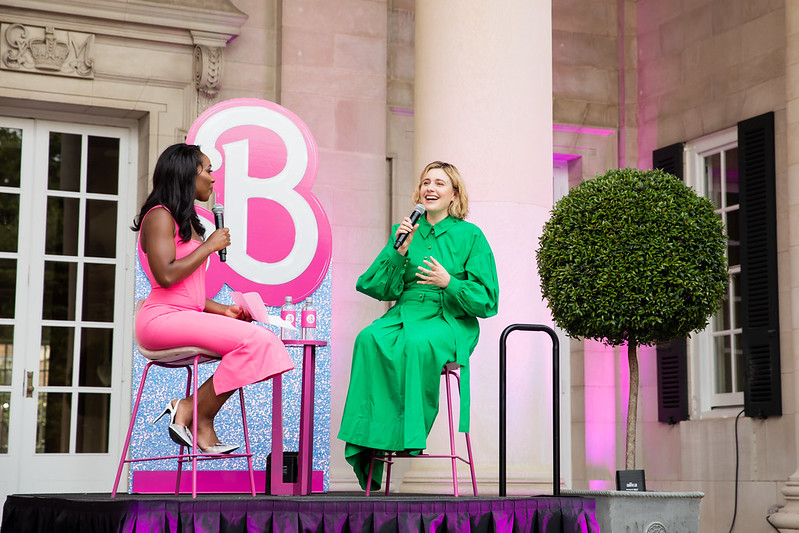As UA students, we should be aware of information regarding large changes in our administration, such as deciding on a new president to lead our university. The presidential search committee seems to think otherwise.
The search to fill the shoes UA President Ann Weaver Hart has filled for the past five years is on—behind closed doors.
Though the presidential search committee assembled in July and began to hold meetings in October of last year, March was the first month any student or member of the local community knew anything about potential candidates’ identities.
At a public university, this is a cause for concern.
UA students trust in their university to keep them well informed. Especially when such a large change could alter the vision of the university as a whole and significantly affect the lives of students. It leaves an unsettling feeling, knowing that students have little to no knowledge of who the search committee is even considering for a position of such great power.
The search has included speaking with and surveying faculty members of the university. However, very few students have had a say in who our next president should be.
RELATED: Arizona Board of Regents interviews two candidates for next UA president
While there are two students on the search committee and there are students representing the university at the Arizona Board of Regents, the greater student body has no say or knowledge about the process.
The UA has seen several familiar faces depart this year, including Greg Bryne, the Athletic Director, who headed for Alabama. It may be the end of one era and the start of a new, but it places students in the middle, unsure what new vision these new administrators have in mind for the university.
We don’t often think about the president of the university when selecting schools to apply to as prospective students, but the person in that position can have a great influence on the university during their term as president, an influence that definitely plays a part in building a school’s reputation.
As a student body, we want prospective students to see the same opportunities to learn and grow that we had. We want a president who has a vision for continuing education.
Looking at this entire process from the outside, it lacks transparency. This decision will ultimately affect students, faculty and the greater Tucson community. So why don’t all of these groups get to participate in the decision-making process?
Most of the student body found out the prospective candidates late in February, when the committee decided to release the information about the two finalists to the public. Few students had their hands in the process, and I imagine many wish they could have.
It’s frustrating as a student that the process is happening behind closed doors. It would be one thing if this was the process that had always traditionally occurred. However, many have expressed this concern, and as students, there is an explanation owed to us.
It’s been a turbulent time from the administrative standpoint at the university, from Hart taking on a role with DeVry University last spring, to Hart’s decision to end her term as president of the university following commencement last May.
Hart’s term started much like the new president’s term will. It is tradition for the presidential candidate to visit the university, to meet students and faculty members and to address their concerns. President Hart was the first president since 1971who wasn’t chosen through this tradition, and it appears the trend will continue with the new UA president.
The old tradition gave students and faculty members the opportunity to meet and converse with candidates, to see how they address the concerns of the university and how they fit in the university as a whole.
While it may be true that keeping the candidates’ names confidential until they are narrowed down to finalists protects those who may be hesitant to enter the process, it isn’t reassuring to have to entice candidates by protecting their names. Yes, it protects the candidates from potential backlash from their current employers, but it creates a selection system that lacks the transparency it needs. It gives students the feeling there’s something to hide from the student body when we’re all shut out from participating in the process.
It’s important this process is transparent to students and that the university isn’t treated as only a business. After all, the UA is an institution of higher education and that should be a priority considered in the search for a president.
RELATED: Saltalamacchia appeals decision to overturn Lubisich campaigning violations to ASUA Supreme Court
There have been concerns raised that the presidential search committee is largely composed of local business people, which raises the question of whether the UA is being looked at as an institution of higher learning or as a business.
The university as a whole functions as a business, but it shouldn’t be treated as one at this administrative level. Many students and faculty would like to see a president who focuses their vision on academia at the university.
Completing this process behind closed doors expedites the process to find a new president. As students, we hope this president fills the time of his contract and would be interested to continue on with the university. This rushed process, now in its fifth month, seems to be pushing a decision just to fill the position.
This should be a lesson to the newly selected president that, in an age of information, transparency is the best policy. It keeps things open and students engaged with major decisions happening at the university we chose.
Follow Leah Gilchrist on Twitter.















